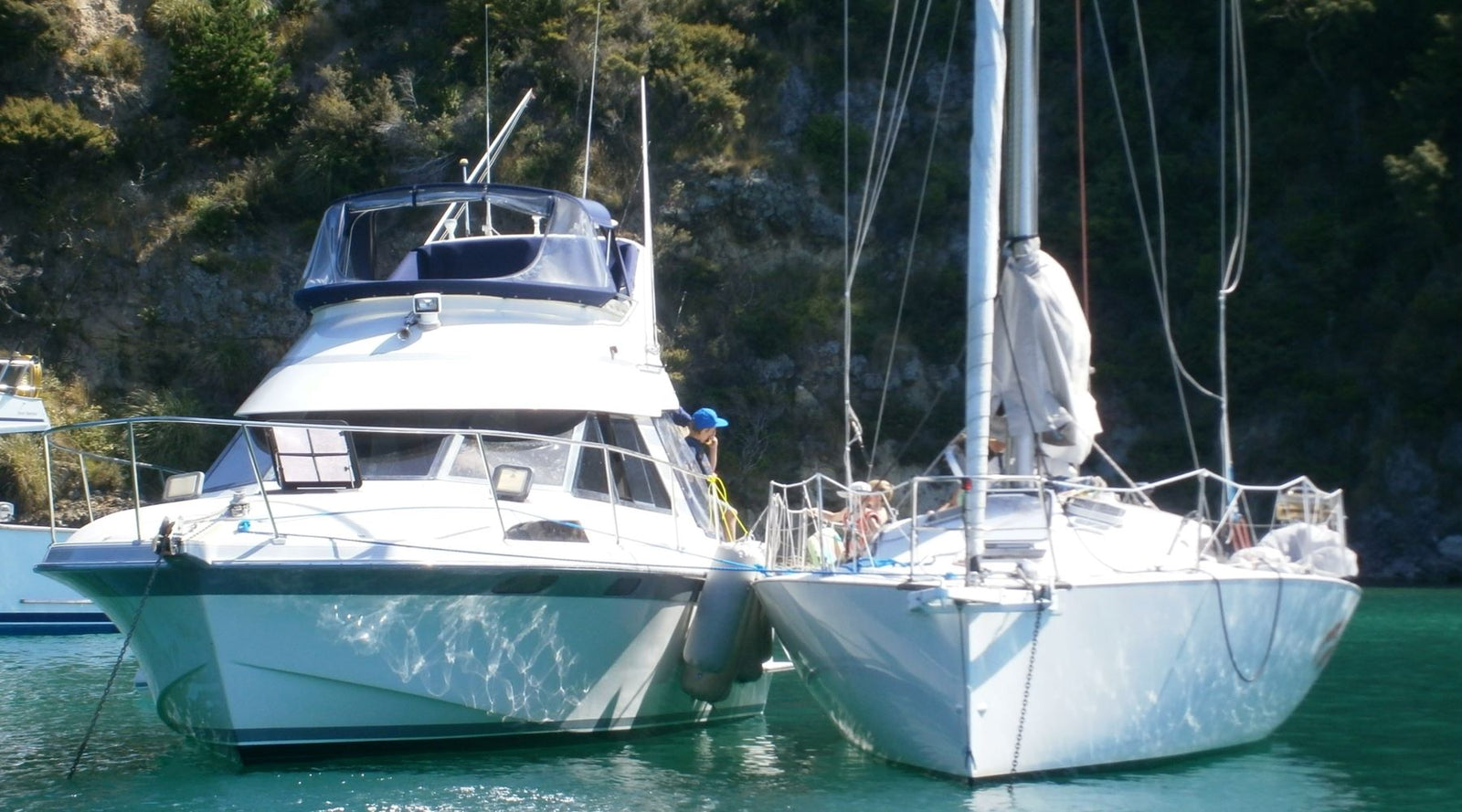Your Cart is Empty
FAST SHIPPING ⚡️ WE CARRY OUR PRODUCTS IN STOCK
- WE DO NOT DROP SHIP ⚡️ NZ WIDE
FAST SHIPPING ⚡️ WE CARRY OUR PRODUCTS IN STOCK
- WE DO NOT DROP SHIP ⚡️ NZ WIDE
FAST SHIPPING ⚡️ WE CARRY OUR PRODUCTS IN STOCK
- WE DO NOT DROP SHIP ⚡️ NZ WIDE
FAST SHIPPING ⚡️ WE CARRY OUR PRODUCTS IN STOCK
- WE DO NOT DROP SHIP ⚡️ NZ WIDE

One of the true joys of modern cruising is the ability to raft up to your friends, be it for an afternoon drink while the children have a swim or overnight for a longer social gathering. While optional in some places and necessary in others, good rafting knowledge and technique is required for comfort and safety.
Cruising the Marlborough Sounds and D’Urville Island at the top of the South Island is a must do for every cruising boat. The relative isolation and rugged beauty of the area is breath taking. For those not accustomed to cruising in these southern waters, the bays can be very deep, even when very close to the shoreline. In some cases, it is too deep to anchor, and even if you could, the swinging room needed for the necessary anchor warp would render the bay useless. This leaves two main options; either anchoring and then stern lining into the trees or using one of the many laid moorings throughout the Sounds. This may require rafting to other boats already on the mooring and is common practice.
Further north is a little different, the waters are shallower, bays are bigger and there are a lot more boats. Combine these factors with the want to socialize (especially those with children onboard) and the raft ups look quite different, more commonly the boats are rafted together and swinging on anchors. As the number of boats on the water increases each year, we are seeing more and more raft ups in these cruising grounds.
Whether it’s rafting up on a mooring, stern lined to a bank or swinging on anchor(s), the principles of good rafting technique remain the same. Consideration of the following key points will ensure no boat (or friendship) gets damaged from a raft up, no matter what conditions may develop:
Before joining a raft up there are two main preparations required.
1- Fenders should be positioned on the side of your boat and ideally also on the receiving boat. At this early stage, place two good fenders amidships, approximately 1 - 2 metres apart with an additional fender further forward and one aft. Ensure they are positioned at a height where they extend above and below the rub strip of your boat.
2- Mooring lines of appropriate size and condition should be attached to cleats on the boat. One on the bow and one on the stern, and two additional lines kept midships to be used as spring lines when completing the raft. The ropes should have good shock absorption and allow some stretch. The use of non-stretch sheets or halyards should be avoided as it can lead to a very uncomfortable and ‘jerky’ motion as the boats move around due to waves or wind. In extreme cases they can also lead to damage to cleats and rope attachment points.
The actual process to raft boats up is reasonably straight forward: -
When leaving a raft up, either reverse the above procedures, or ideally just release the spring lines, followed by the bow and stern lines, and allow the boat to slowly drift backwards whilst a crew member makes sure the boats remain apart. Once clear aft, move away and tidy up.
Unfortunately, not all boat operators are considerate or experienced skippers, and some can put large wakes through anchorages and populated bays. So, ensure the raft up is solid, well fendered and lines are tight, so the raft moves as one.Hauraki Inflatable Fenders were designed especially for rafting up. Because the fenders are inflatable, they are big enough to keep boats safely apart, and can be stored away easily once deflated.
The range of Hauraki Fleece Fender Covers do a great job of reducing fender squeak and noise due to the movement of the boats in a raft up.
Hauraki Fenders nylon rafting line is the ideal combination of stretch, strength and size for boats rafting together.
If you have any questions or need some advice, please get in touch with us.